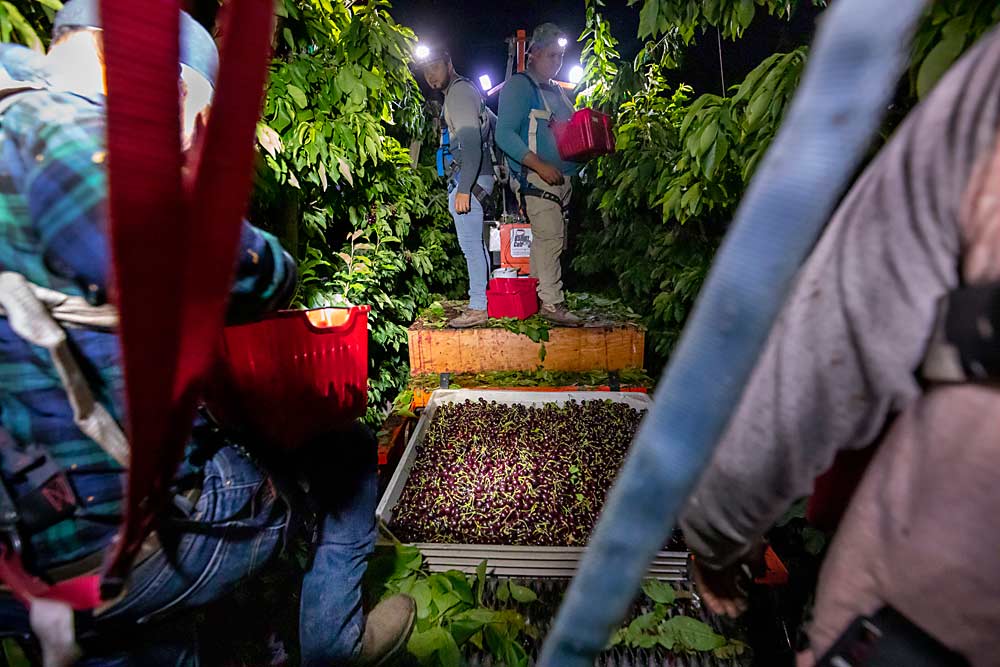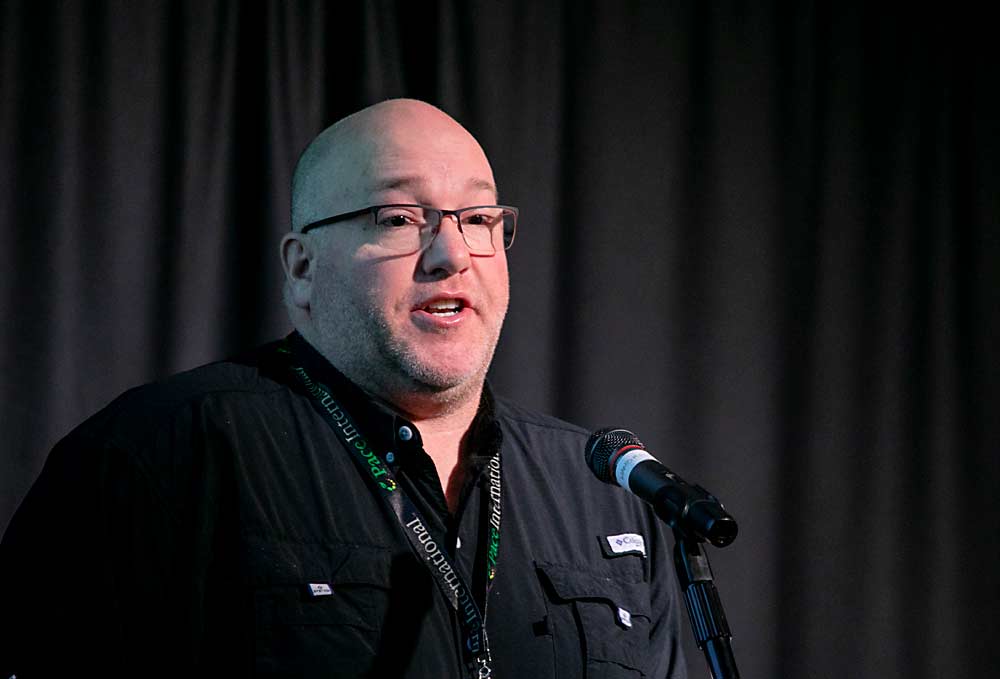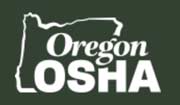
Extreme summer heat and wildfire smoke are no longer surprises. That means no more “emergency” rules.
State and federal agencies are replacing their temporary workplace safety regulations regarding heat illness and wildfire smoke exposure with permanent versions, if they haven’t already done so.
At the federal level, regulators have set their sights on national heat safety standards but, so far, have not mentioned smoke.
For years, the U.S. Occupational Safety and Health Administration, or OSHA, has been under pressure to pass workplace standards that protect employees from extreme heat. A coalition of six state governors — New York, California and Pennsylvania among them — petitioned OSHA for the standards.
Early in 2021, OSHA launched an awareness campaign, advising employers to watch for signs of heat-related illness. Later that year, calling heat the leading cause of weather-related workplace fatalities, the agency implemented a rare policymaking tool, an Advance Notice of Proposed Rulemaking, to ask stakeholders questions about work arrangements, historic underreporting of heat illness and the disproportionate effects on low-wage workers and people of color.
In response, the Northwest Horticultural Council urged OSHA to avoid one-size-fits-all standards that don’t account for different workplace arrangements and other factors. They also asked OSHA to set some expectations of the workers to follow all the rules, instead of putting the enforcement onus solely on employers, and the council objected to blanket requirements for housing air conditioning in areas with cool nights.
“We are not arguing that employers shouldn’t provide housing that is cool enough to be comfortable, but that this may mean different things in different regions,” said Kate Tynan, senior vice president of the council, which represents the tree fruit industry in federal issues.
OSHA has not submitted a formal proposed rule and probably won’t before the 2023 harvest season, Tynan said.
From 2011 to 2019, environmental heat caused 38 fatalities per year and an average of 2,700 days of lost work, according to the U.S. Bureau of Labor Statistics. Agriculture, forestry, fishing and hunting accounted for five deaths per year.
West Coast states
At the state level, California, Oregon and Washington are enacting or have enacted their own recent updates to heat and smoke rules after implementing emergency regulations.
California established emergency heat regulations in 2005 and made them permanent in 2006. Emergency wildfire smoke protection standards took effect in 2020 and became permanent the next year. Oregon enacted permanent rules around heat and smoke exposure that took effect summer 2022. Washington is going through the process now.
“California certainly is proud to say that we lead the nation on rulemaking in these two areas,” said Brandon Hart, a spokesman for the state’s Division of Occupational Safety and Health.
California’s heat regulations require employers to provide water, shade and rest. Billboards up and down California State Route 99, through the highly agricultural Central Valley, remind everyone in English and Spanish. Employers must maintain a detailed plan for preventing heat-related illness, train workers and supervisors, provide shade when temperatures reach 80 degrees Fahrenheit or higher and allow workers to take preventative cool-down breaks “when they feel the need to do so.”
Oregon’s heat regulations, which also kick in at 80 degrees, require employers to provide shade areas and drinking water, let workers acclimatize to heat, write a heat-related illness prevention plan and train workers and supervisors. They also mandate a cooling break schedule when temperatures hit 90.
For the smoke rules, all states based their mandates on the Air Quality Index, or AQI, developed by the U.S. Environmental Protection Agency, for particulate matter of 2.5 micrometers or smaller.
California’s smoke rule requires employers to move employees out of the smoky conditions, juggle schedules, reduce work intensity or grant more rest breaks if the AQI hits 151 or higher. They also must provide N95 masks to all employees for voluntary use. If the AQI goes over 500, they must require that employees use those masks.
Oregon’s rule has similar requirements, but the AQI thresholds are lower: They kick in at 101 AQI, while employers must enforce the use of N95 masks at 251.
Washington
In Washington, regulators aim to have new permanent standards addressing heat and smoke in place by June 2023, said Bradley Farrar, state Department of Labor and Industries agricultural technical policy specialist, at the Washington State Tree Fruit Association Annual Meeting in December in Wenatchee. The agency has not yet submitted formal proposed rules, but it has been sharing suggestions with labor representatives and employers.

When it comes to heat, the state already has a permanent rule, passed in 2008. It triggers at 89 degrees and requires employers to address heat in their accident prevention plans, train employees and supervisors, and provide drinking water. The threshold is lower depending on clothing or personal protective equipment.
During the heat wave of 2021, labor advocates petitioned regulators at the Department of Labor and Industries, or L&I, to enact a more stringent emergency rule. They did and started developing a new permanent version, didn’t finish, and then passed a new emergency rule for summer 2022.
In the updated permanent rule, L&I wants to address trigger temperatures, shade, rest breaks and acclimatization periods, Farrar said.
Not only does heat cause direct illness, other types of injuries, such as falls, increase during heat waves, Farrar said. “The heat can really affect the way that you work and the quality of your work in many ways,” he said.
Changes under consideration would: include a specific mandate for shade; lower the trigger temperature to 80 degrees for most clothing; require rest breaks of different lengths for different temperatures; and mandate that employers give new workers seven to 14 days to acclimatize and closely monitor their well-being during that time, Farrar said. Many of those stipulations are already in the current emergency rules.
State fruit industry officials agree with the goals but are pushing back on details, said Jon DeVaney, president of the Washington State Tree Fruit Association, or WSTFA. For one example, the 80-degree temperature threshold is too low, doesn’t consider humidity and seems arbitrary, he said.
WSTFA officials also argue that L&I’s statistics on claims lump in illnesses and accidents for people who have heart conditions or other vulnerabilities with those that affect the general population. They also would like an acclimatization exception for workers who come from a hot climate or another farm in a hot climate.
They also worry that acclimatization rules could result in allowing as little as 5 minutes of work per hour, if they follow one of the few written recommendations that exist on the topic, DeVaney said.
On the smoke front, L&I has suggested requiring that employers include smoke exposure in their workplace hazard plan and annually train workers and supervisors. Once the AQI goes above 101, they would have to provide respirators and take “reasonable” control measures, Farrar said. When the AQI tops 500, they must enforce respirators.
WSTFA wants to avoid making employers enforce personal health decisions, DeVaney said. He likens forcing workers to use respirators to forcing them to quit smoking, exercise or eat healthier. Employers have enough trouble ensuring workers wear harnesses on a platform or safety glasses while pruning, which both prevent accidents. Providing education and training on the hazards of poor air quality and making protective equipment available is more reasonable, he said.
Both Farrar and DeVaney encourage growers to comment on the pending rules at: bit.ly/heat-exposure-rulemaking.
—by Ross Courtney







Leave A Comment